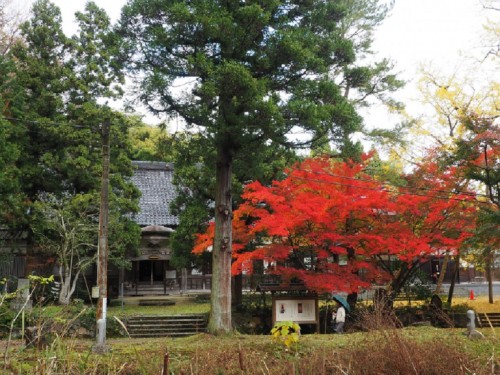Sponsored by Himi City
Himi, a small waterfront town in Toyama Bay, located in Toyama Prefecture, boasts a wealth of attractiveness, from sights of the distant, northern part of the Japanese Alps, to its culture and fishing industry. It is here, in particular, that Buri (鰤; ブ リ), a fish popularly used in New Year dishes, is caught.
A Bay Cruise
Nothing is like a trip on the waves to make you feel like a true sailor. This 25-minute cruise offers a beautiful panorama view of the sea, Himi, the mountains on the horizon, and the fixed fishing areas. Complete with the horde of seagulls, who are as endearing as they are greedy; this trip will surely delight children both big and small. Just don’t forget your camera!
Himi City Fishing Cultural Exchange Centre
With its large array of fishing related tools, this centre, located at the port, gives you an insight into the world of fishing. It is a friendly place that promotes the culture of fishing, and houses a small antiques market with the theme of the sea. Why not remember your trip with a souvenir from history? This is also where you can rent electric bikes for 500 yen or a normal bike for 200 yen a day.




Japanese Amberjack (Buri)
Buri, otherwise known by its western name, Japanese amberjack, is a fish that can range from a weight of 2.5kg to 10kg or more, with the biggest Buri selling at the same price as gold! It evolved in the seas surrounding the Asian continents and in the pacific ocean and is distinguishable from other silver-coloured fish by the yellow line that runs along its body. While it can be found throughout the year, the peak season for Buri is from December to February in Japan due to the fish migrating south in the colder, winter months. In Toyama Bay, a “fixed net”, a technique that has been used for 400 years in Himi and which is respectful of the environment, traps the travelling fish in the area near Noto Peninsula.
The best way to enjoy Buri is to have some fresh sashimi and in particular, extremely fresh sashimi with a higher fat content that varies from red to white . This fish is enjoyed in many end of the year celebrations. But, with a unit price that varies between 20,000 yen and 50,000 yen (and more, fair value) depending on the production, you will understand that this is an exceptional gift.

Buri
A Fishing trip and Auctions at the market
In the early morning, while the rest of the city sleeps, Himi port comes to life. The sailors return to the port very early and hurry to unload their fish. It is a race against the clock as the fishermen battle to give customers and restaurateurs the freshest fish possible. You too can witness the excitement of these auctions by visiting the “Himi Tourism Association”, which can offer you a market visit between 6 am and 10 am. Reserve your spot to attend the fish auction by phone here.






Complete your tour of Buri with a visit to the beautiful, traditional Japanese house that belonged to a family that made a fortune in the trade of Buri during the Meiji era. The villa Hamamoto is full of treasures.

How to Get to Himi?
Just an hour from Kanazawa (easily accessible by car or Shinkansen, via Shin-Takaoka), Himi offers you breathtaking scenery and culture near the northern part of the Japanese Alps, as well as an escape from the big cities of Japan. About 4 hours from Kyoto and Tokyo via Shinkansen, Himi is the ideal destination for a weekend in the countryside.
There are two main ways to travel from Tokyo:
Take the Hokuriku Shinkansen bound for Kanazawa, and get off at Shin-Takaoka. From there, take a local bus (platform number 4 from the bus station, 500 yen) that will take you the michi-no-eki station named Himi Banyagai, close to the port and the city center.





Another option: take the same Shinkansen but this time, get off at Toyama. Then, take a train on the Toyama Line (Ainokaze Toyama Tetsudo) and get off at Takaoka (4 stops). Finally, get a train on the Himi Line and get off at the last stop, Himi Station. Enjoy the sea of Japan and its beautiful landscapes from the train window.


Once there, you can rent-a-cycle (an electric bike for 500 yen and a normal bike for 200 yen a day), if you decide to stay in the center. But it is better to rent a car if you also want to enjoy any of the activities in the surrounding areas.
Official Information :
- Official Website of Toyama Prefecture.
- Himi Tourism Information.
Translated by Aika Ikeda

















No Comments yet!